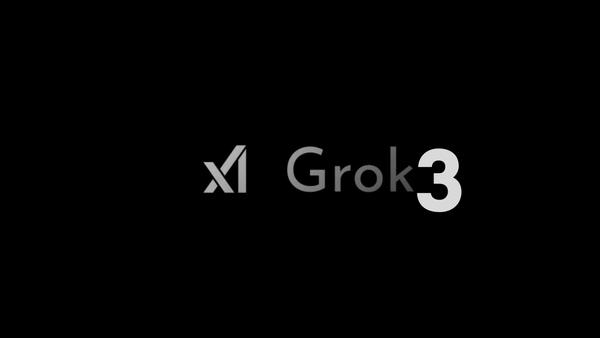In the ever-evolving landscape of artificial intelligence, xAI has once again captured the tech world's attention with the announcement of Grok 3, an AI model touted as a significant advancement over its predecessors. Here's a deep dive into what Grok 3 represents, its capabilities, and the implications of its release.
What is Grok 3?
Grok 3 is the latest iteration from xAI, Elon Musk's company dedicated to accelerating human scientific discovery. Building upon the foundation laid by Grok 2, this new model promises to push the boundaries of what AI can achieve. It's described by Musk himself as potentially the "smartest AI on Earth," suggesting a leap in performance, reasoning, and utility.
Key Features and Capabilities
Enhanced Computational Power: Grok 3 has been trained using significantly more computational resources than its predecessor, reportedly consuming around 200 million GPU-hours. This massive increase in training compute is expected to translate into superior model performance.
Multimodal Interaction: Unlike earlier versions, Grok 3 is designed to be multimodal, meaning it can process and generate not just text but also images, audio, and possibly other data types. This feature allows for a richer interaction, making Grok 3 a versatile tool for various applications.
Synthetic Data Training: To avoid legal issues with web-scraped data and enhance logical consistency, Grok 3 has been trained on synthetic datasets. This approach is said to improve the model's reasoning capabilities by allowing it to reflect on and correct data inaccuracies.
Self-Correction Mechanism: One of Grok 3's unique selling points is its ability to self-correct. This means the model can identify and rectify its own errors or hallucinations, improving its reliability and accuracy over time.
Reasoning and Problem-Solving: Early tests suggest Grok 3 excels in complex reasoning tasks, surpassing competitors like OpenAI's ChatGPT and Google's DeepMind Gemini in certain benchmarks. This capability could make it a powerful tool in fields requiring deep analytical skills.
Controversies and Challenges
The development of Grok 3 hasn't been without its controversies. Reports suggest an xAI engineer was forced to resign after posting about Grok 3 on social media, highlighting tensions between company confidentiality and free speech. Moreover, there have been debates around the model's political neutrality, with previous versions showing a left-leaning bias, prompting xAI to aim for more balanced responses in Grok 3.
Implications for the AI Landscape
Competition: Grok 3's entry into the market could significantly shake up the AI competition, especially if it lives up to Musk's claims of outperforming existing models. This could pressure other tech giants to accelerate their own AI projects.
Ethical AI Use: With more powerful AI comes the responsibility to use it ethically. Grok 3's capabilities in handling sensitive or controversial topics will be under scrutiny, particularly in how it navigates the fine line between freedom of expression and misinformation.
User Experience: For everyday users, Grok 3 promises to be an engaging, perhaps even entertaining, AI assistant, with Musk's vision of an AI that's not only functional but also has a sense of humor and wit.
Looking Ahead
While Grok 3 was initially rumored for a 2024 release, it missed that deadline, adding to the anticipation and speculation around its capabilities. With the official launch announced for Monday, February 17, 2025, all eyes will be on how this model will integrate into daily use, from coding assistance to answering complex queries with unprecedented accuracy and creativity.
Grok 3 might just redefine what we expect from AI, bringing us closer to a future where AI not only assists but also enhances human cognitive capabilities in profound ways. However, as with all technological leaps, its impact will depend on how well it's integrated into society, the ethical considerations it addresses, and the transparency of its operations.




